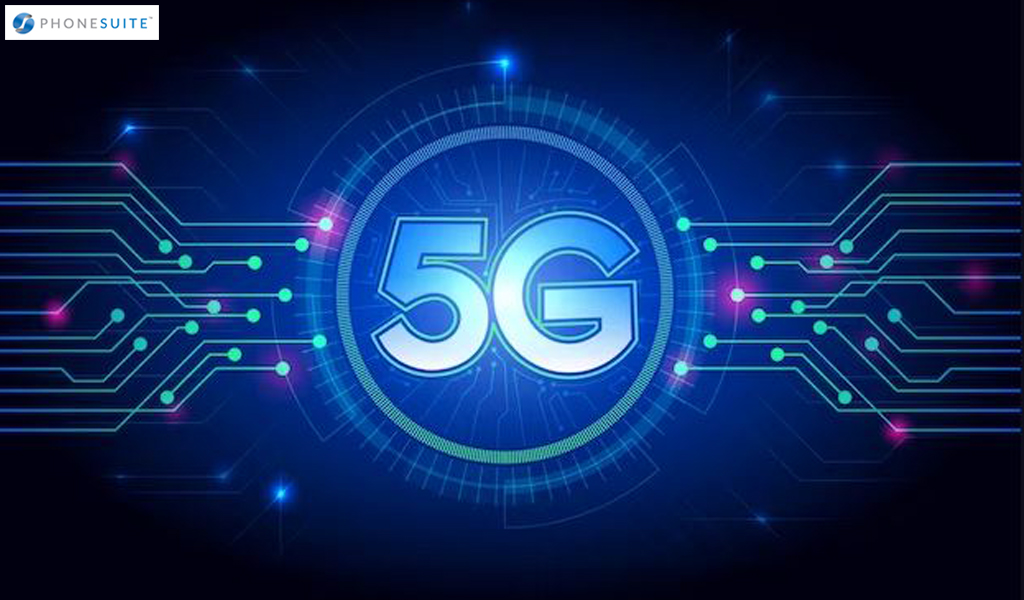As technology moves at a rapid pace, the emergence of 5G networks has sparked excitement among marketers everywhere. Already used by major providers like Verizon and AT&T, this next-generation cellular network promises to revolutionize the way we use our phones and access data. From increased speeds to more reliable connections – even in congested environments such as stadiums or airports – there’s no doubt that 5G will have far-reaching implications for businesses of all sizes. In this post, we’ll explore some of the advantages that come with accessing 5G networks, as well as how organizations can leverage them for greater success. Get ready for an exciting new age filled with improved customer experiences across devices!
What is 5G Technology and How Does it Work?
5G technology is the next generation of wireless communication technology that promises to transform the way we connect and communicate. It is the successor to the widely used 4G LTE (Long-Term Evolution) technology and is designed to provide faster data speeds, lower latency, increased capacity, and better overall connectivity.
The fundamental technologies and components that underpin 5G are:
Millimeter Waves (mmWave): 5G uses higher frequency bands, including millimeter waves, which operate in the range of 30 to 300 gigahertz (GHz). These high-frequency waves offer larger bandwidths, enabling faster data transmission. However, mmWave signals have a shorter range and are more easily obstructed by obstacles like buildings and trees.
Small Cells: To overcome the limitations of mmWave signals, 5G networks employ a dense network of small cells. Small cells are low-power base stations that are strategically placed in close proximity to users. They help enhance coverage and capacity, especially in urban areas with high user density.
Massive MIMO (Multiple Input Multiple Output): 5G utilizes massive MIMO technology, which involves multiple antennas at both the transmitter and receiver ends. This advanced antenna system improves spectral efficiency, increases network capacity, and enhances signal reception, even in crowded environments.
Beamforming: Beamforming is a technique used in 5G to direct the radio signals towards specific users rather than broadcasting in all directions. This targeted transmission enhances signal strength, reduces interference, and improves overall network performance.
Network Slicing: 5G introduces the concept of network slicing, which allows operators to create multiple virtual networks within a single physical network infrastructure. Each network slice can be optimized for different use cases, such as enhanced mobile broadband, massive IoT (Internet of Things), and ultra-reliable low-latency communications.
What is 5G Technology Network?
5G stands for “fifth generation,” and it represents a significant leap forward in wireless communication capabilities. This technology goes beyond simply improving existing networks; it introduces new infrastructure and standards to enable a more efficient and connected world. With 5G, data can be transmitted at unprecedented speeds, making it possible for users to download large files, stream high-definition videos, and access cloud-based services faster than ever before.
Advantages of 5G Technology
5G technology delivers a host of advantages that go far beyond simply increasing speed. By combining faster data rates, greater network capacity, and enhanced coverage, it is reshaping the way people, devices, and industries connect. These benefits enable new applications, power emerging technologies, and improve user experiences across the board.
Faster Speeds
One of the most talked-about benefits of 5G is its extraordinary speed. While 4G LTE offers speeds up to 100 Mbps, 5G can reach up to 10 Gbps, fast enough to download a high-definition movie in just seconds. This increase supports bandwidth-intensive tasks like 4K and 8K video streaming, high-volume file transfers, and seamless use of cloud-based applications.
Increased Bandwidth and Capacity
5G operates on higher-frequency bands, including millimeter waves, which provide broader bandwidth for simultaneous data transmission. This allows networks to handle a much larger number of connected devices without performance drops, a critical advantage as IoT adoption accelerates. From smart appliances to connected vehicles, 5G ensures each device gets the connectivity it needs.
Improved Network Coverage
Through the deployment of small cells and advanced technologies like beamforming, 5G can deliver stronger and more consistent coverage, even in crowded areas like stadiums, airports, or urban centers. This ensures that users experience reliable connections with minimal signal loss, regardless of the number of devices connected nearby.
Enabling Innovation and Emerging Technologies
Beyond consumer convenience, 5G acts as a catalyst for innovation in industries ranging from healthcare to entertainment. Its low latency makes real-time applications, such as remote surgery, virtual reality (VR), and augmented reality (AR), practical and scalable. For example, surgeons can operate remotely using robotic assistance, and educators can deliver immersive training experiences to students anywhere in the world.
Transforming Industries and Smart Cities
The combination of speed, capacity, and reliability positions 5G as the backbone of Industry 4.0 and smart city initiatives. In manufacturing, 5G supports real-time monitoring, predictive maintenance, and automation. In transportation, it enables autonomous vehicles to communicate and respond instantly to their surroundings. In cities, it powers connected infrastructure, from intelligent traffic management to energy-efficient lighting, making urban environments safer, more sustainable, and more efficient.
5G Business Opportunities
The emergence of 5G technology presents a plethora of opportunities that extend far beyond faster data speeds and improved connectivity. As 5G networks continue to roll out globally, it creates a fertile ground for various sectors to thrive, unlocking new possibilities and driving economic growth. Some of the key opportunities posed by 5G include the development of emerging markets, the establishment of new businesses, and the attraction of investments.
1. Development of Emerging Markets
5G technology has the potential to bridge the digital divide and accelerate the development of emerging markets. In regions where internet infrastructure is limited, the deployment of 5G networks can provide access to high-speed internet, opening up new opportunities for businesses, education, and healthcare services. Access to 5G can empower individuals and communities, providing them with the tools to participate in the global digital economy.
Moreover, the capabilities of 5G can transform various industries in emerging markets. For instance, precision agriculture, enabled by the low-latency and connectivity of 5G, can optimize farming practices, leading to increased productivity and reduced environmental impact. Additionally, telemedicine powered by 5G can enhance healthcare services in remote areas, allowing patients to access specialist care and consultations without traveling long distances.
2. Fostering New Businesses and Entrepreneurship
The advent of 5G opens doors for entrepreneurs and startups to explore innovative business models and applications. With the increased speed and bandwidth of 5G, startups can offer new and sophisticated services that were previously limited by network constraints. This includes immersive virtual and augmented reality experiences, interactive live streaming applications, and cloud-based services with real-time processing.
Startups can leverage the low-latency of 5G to create innovative products in sectors like gaming, remote collaboration, and autonomous vehicles. Additionally, the expanded capacity of 5G networks allows for the proliferation of IoT devices, creating opportunities for businesses to develop and offer IoT-enabled solutions in various industries.
3. Attraction of Investments and Economic Growth
The widespread deployment of 5G networks has the potential to attract substantial investments, stimulate innovation, and drive economic growth. Governments and private sector entities that invest in 5G infrastructure can foster an environment conducive to technological advancements and a thriving digital ecosystem. As industries and businesses embrace 5G, they can gain a competitive edge by offering cutting-edge products and services to their customers.
Investments in 5G infrastructure can lead to job creation and economic benefits across various sectors. The development of a robust 5G ecosystem, including network equipment manufacturers, device makers, and service providers, can stimulate economic activity and attract foreign investments.
4. Transformation of Industry Verticals
5G is set to revolutionize industry verticals across the board. From manufacturing and transportation to healthcare and entertainment, various sectors will witness transformative changes. Industries can leverage 5G’s capabilities to enhance automation, optimize supply chains, improve logistics, and enable new business models.
For example, in the manufacturing sector, 5G can enable real-time monitoring of production processes, facilitating predictive maintenance and reducing downtime. In the transportation industry, 5G can enhance vehicle-to-vehicle (V2V) and vehicle-to-infrastructure (V2I) communication, making roads safer and enabling autonomous vehicles to operate efficiently.
5. Smart City Initiatives
5G technology is a crucial enabler for smart city initiatives. As cities seek to improve efficiency, sustainability, and the quality of life for their residents, 5G networks provide the connectivity and capacity required for a vast network of interconnected devices and sensors.
Smart city applications, such as smart lighting, waste management, traffic management, and public safety systems, rely on the seamless communication and low-latency of 5G. As cities adopt these technologies, they become more attractive to businesses and residents, driving economic growth and urban development.
What Can 5G Do for Business?
5G goes beyond faster internet on smartphones. It unlocks new possibilities for how businesses operate, innovate, and serve customers.
Faster Connectivity & Productivity
With speeds up to 100 times faster than 4G, 5G allows for instant data transfer, seamless video conferencing, and smoother use of cloud-based applications, boosting day-to-day efficiency.
Enabling IoT & Automation
The low latency of 5G makes it possible to connect thousands of devices in real time. For businesses, this means smarter factories, improved supply chain tracking, and better use of sensors and automation tools.
Enhanced Customer Experience
Retailers can offer immersive AR shopping experiences, while service providers can deliver faster, more reliable digital services—helping businesses stand out and build stronger customer relationships.
Remote Work & Collaboration
5G strengthens mobile workforces by providing reliable connectivity anywhere, supporting remote teams, field operations, and virtual collaboration without the lag.
Challenges of 5G Technology
While 5G offers groundbreaking potential, it also faces challenges that can slow adoption or limit its immediate impact. Understanding these limitations helps businesses and consumers set realistic expectations.
Coverage Limitations
5G networks, especially those using millimeter wave (mmWave) frequencies, have a shorter range than 4G and are more easily blocked by obstacles like buildings or trees. To maintain consistent service, providers must install a dense network of small cells, which can take years to deploy.
Device Compatibility
Not all devices are 5G-ready. To take advantage of 5G speeds and features, consumers and businesses often need new smartphones, modems, or IoT devices equipped with compatible hardware.
Infrastructure Costs
Rolling out 5G requires significant investment in new antennas, fiber connections, and supporting infrastructure. This can be a challenge for rural areas where the return on investment is slower.
Regulatory and Spectrum Challenges
The allocation of spectrum bands and the approval of new infrastructure can vary widely between countries, sometimes slowing deployment. Geopolitical factors may also influence which vendors and technologies are used.
Real-World 5G Use Cases By Industry
5G’s capabilities are already being applied in diverse sectors, transforming the way organizations operate and deliver services.
Healthcare
Low-latency connectivity enables remote surgeries using robotic systems, real-time patient monitoring, and high-resolution medical imaging sharing between specialists.
Transportation
5G supports vehicle-to-vehicle (V2V) and vehicle-to-infrastructure (V2I) communications for autonomous driving, intelligent traffic management, and improved road safety.
Manufacturing
Factories use 5G for predictive maintenance, robotics control, and automated quality inspections, helping reduce downtime and improve productivity.
Entertainment and Media
From immersive VR/AR experiences to ultra-HD live streaming, 5G enables low-lag, high-quality content delivery for gaming, events, and virtual collaboration.
Public Safety
First responders can stream real-time drone footage, access cloud-based emergency data, and coordinate across agencies with instant connectivity.
The Impact Of 5G On Telecom
The advent of 5G technology is poised to bring about a transformative impact on the telecommunications industry. Its enhanced capabilities, including faster data speeds, reduced latency, and increased network capacity, offer numerous benefits for consumers, operators, and infrastructure developers alike. Let’s explore the impact of 5G on each of these stakeholders:
Benefits for Consumers:
Faster and Seamless Connectivity: Consumers will experience significantly faster data speeds with 5G, enabling them to download files, stream high-definition videos, and access cloud-based services without any lag or buffering. This faster and more seamless connectivity enhances the overall user experience, making activities like video calls, online gaming, and content consumption more enjoyable.
Improved Mobile Experience:
With reduced latency, 5G facilitates real-time interactions on mobile devices. This means faster response times for online activities and applications, resulting in a more responsive and interactive mobile experience.
Enhanced Virtual and Augmented Reality:
5G’s low-latency and high bandwidth are particularly beneficial for virtual and augmented reality applications. Consumers can experience more immersive and realistic VR/AR experiences without the motion sickness or lag associated with lower-speed networks.
IoT-Enabled Convenience:
As 5G supports a massive number of connected devices, consumers will witness the proliferation of IoT devices in their homes and daily lives. Smart homes, wearables, and connected appliances will become more prevalent, offering enhanced convenience and automation.
Benefits for Operators:
Increased Revenue Streams: 5G technology opens doors to new revenue streams for operators. With faster and more reliable connectivity, consumers are likely to embrace higher data plans and subscribe to services like augmented reality gaming and virtual events.
Network Efficiency and Cost Reduction:
5G’s increased capacity allows operators to accommodate more users and devices, optimizing their networks’ efficiency. Additionally, the ability to deploy network slicing helps operators allocate resources more efficiently for various services, reducing costs.
New Business Opportunities:
5G facilitates partnerships and collaborations with various industries, such as healthcare, transportation, and manufacturing. Operators can offer industry-specific solutions and services, enabling new business opportunities beyond traditional communication services.
Enhanced Customer Loyalty:
Providing superior 5G services can boost customer satisfaction and loyalty. Operators that deliver fast, reliable, and innovative 5G experiences are more likely to retain customers and attract new ones seeking cutting-edge connectivity.
Benefits for Infrastructure Developers:
Investment Opportunities:
The rollout of 5G networks requires significant infrastructure development, creating lucrative investment opportunities for companies specializing in telecommunications equipment, network deployment, and technology solutions.
Job Creation and Economic Growth:
As infrastructure development accelerates to meet the demands of 5G deployment, it will lead to job creation and stimulate economic growth in the telecommunications sector and related industries.
Technological Advancements:
Infrastructure developers will be at the forefront of technological advancements related to 5G networks. They will play a crucial role in pushing the boundaries of network capabilities and developing innovative solutions to support the evolving telecom landscape.
Sustainable Development:
With a focus on 5G deployment, infrastructure developers have the opportunity to contribute to more sustainable and environmentally friendly practices. Energy-efficient network solutions and eco-friendly infrastructure are essential considerations as 5G networks expand.
5G Investment Opportunities: 10 Tips For Smart Decisions
Investing in 5G-related companies and industries can be a promising venture, given the significant potential for growth and innovation in this sector. However, like any investment, it comes with its share of risks and considerations. Here are some tips to help you make informed decisions when investing in 5G-related opportunities:
1. Research the 5G Market
Before making any investment, thoroughly research the 5G market and its potential for growth. Understand the current state of 5G deployment, its adoption rates, and the projected future growth. Study market reports, industry trends, and forecasts to gain insights into the opportunities and challenges that lie ahead.
2. Diversify Your Investments
Instead of putting all your capital into a single 5G-related company, consider diversifying your investments across multiple firms and industries within the 5G ecosystem. Diversification helps mitigate risk, as the success of individual companies can vary. Invest in a mix of telecom operators, network equipment manufacturers, semiconductor companies, IoT providers, and other businesses benefiting from the 5G revolution.
3. Focus on Established Players and Market Leaders
While there may be some promising startups and emerging players in the 5G space, consider allocating a significant portion of your investment to established and reputable companies. Market leaders with a proven track record of innovation and success are more likely to weather market fluctuations and capitalize on the growth opportunities in the 5G industry.
4. Analyze Financial Performance
Examine the financial performance of the companies you are considering investing in. Look for sustainable revenue growth, strong balance sheets, and healthy cash flows. Companies with solid financial fundamentals are better positioned to invest in research, development, and infrastructure expansion, which are crucial for staying competitive in the 5G market.
5. Assess Technological Leadership
Evaluate the technological capabilities and leadership of the companies you’re interested in. Companies with cutting-edge technologies, patents, and a robust product pipeline are more likely to thrive in the 5G landscape. Keep an eye on their investments in research and development to ensure they stay at the forefront of innovation.
6. Consider Regulatory and Political Factors
Be aware of regulatory and political factors that can impact the 5G industry. Government policies, spectrum allocation, and international trade relations can influence the growth and profitability of companies operating in this space. Stay informed about any potential policy changes that may affect the industry’s outlook.
7. Monitor Global 5G Deployment
Keep track of the global deployment of 5G networks. Countries with faster and more extensive 5G deployments may provide better growth opportunities for companies in the 5G industry. Consider investing in companies with exposure to markets where 5G adoption is gaining momentum.
8. Be Mindful of Valuations
Investing in 5G-related companies can be exciting, but don’t let excitement cloud your judgment. Assess the valuations of companies and industries you are considering. Be cautious of overvalued stocks that may not be justified by the company’s fundamentals or the market’s future growth potential.
9. Long-Term Perspective
Investing in 5G is not a short-term play. It requires a long-term perspective to reap the potential rewards. Understand that the full impact of 5G on various industries and companies may take years to materialize. Be patient and willing to hold onto your investments for the long haul.
10. Seek Professional Advice
If you are uncertain about making investment decisions in the 5G space, consider seeking advice from a financial advisor or investment professional who has expertise in technology and telecommunications sectors. They can provide personalized guidance based on your financial goals, risk tolerance, and investment horizon.
Help Revolutionize Your Business
The hospitality industry has long been at the forefront of innovation, constantly striving to provide guests with exceptional experiences. Cloud solutions offer a wide array of benefits that are transforming the way hotels, resorts, and other hospitality businesses operate and deliver convenient phone hospitality services.
PhoneSuite is an extraordinary company that offers a variety of hospitality products and services that can help revolutionize your business. From Voicemails to PBX Systems, PhoneSuite has the technology available for you to win over your customers. By investing in the PhoneSuite products and services, you will be getting a comprehensive solution designed specifically for hospitality settings that can help you build relationships with your guests, ensuring customer satisfaction and long-term success. All of this, coupled with their incredible customer service, makes PhoneSuite the perfect partner for your hospitality business. With their vast expertise in the field and passion for making sure businesses succeed, partnering with PhoneSuite is the best decision to make for transforming your business today.
5G Technology FAQs
Advantages of 5G over 4G
5G offers faster speeds (up to 10 Gbps), lower latency, and higher device capacity compared to 4G LTE. It also enables advanced applications like autonomous vehicles and remote surgery.
Is 5G available everywhere?
No. While coverage is expanding, availability depends on your location, network provider, and the type of 5G technology deployed in your area.
Is 5G safe?
Current research and regulatory bodies, including the WHO and FCC, indicate that 5G operates within safe exposure limits, similar to previous generations.
How does 5G impact IoT devices?
5G’s increased bandwidth and low latency make it ideal for connecting large numbers of IoT devices reliably and in real time.




